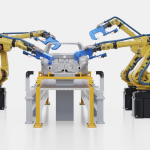A new report from the NewClimate Institute and Carbon Market Watch finds five of the world’s largest fashion companies are failing to back up their climate pledges with meaningful implementation. While Adidas, H&M, and Inditex have improved their 2030 greenhouse gas reduction targets, bringing them in line with the 1.5°C pathway outlined in the Paris Agreement, their actual progress on emissions reductions varies widely. Adidas and H&M have cut emissions in recent years, but Inditex’s emissions have remained flat, and Shein’s have risen sharply.
Climate Targets Improve, But Action Plans Lag Behind
The 2025 edition of the Corporate Climate Responsibility Monitor singles out Shein and Lululemon for offering weak or misleading commitments. Shein, for example, has promised to cut emissions intensity by 25% by 2030, but under that plan, its total emissions could still more than double compared to 2021. Lululemon, too, was flagged for setting targets that allow for overall emissions growth.
Despite revenue topping $123 billion across the five companies in 2023, the report concludes that none currently have a high-integrity climate strategy. Key gaps include a lack of operational transition plans, continued use of fossil gas and biomass as coal substitutes, and insufficient transparency around production volumes, one of the clearest levers for cutting emissions in the fashion sector.
Supply Chain Electrification Is the Missing Link
The bulk of emissions from the fashion sector stem from manufacturing processes, particularly energy-intensive activities like dyeing, washing, and drying. Yet most companies are still betting on incremental measures rather than transformative shifts. According to the report, the only scalable path to deep decarbonization is full supply chain electrification powered by renewable energy.
H&M, Inditex, and Lululemon have all made vague commitments to source renewable electricity, but none have presented credible plans to electrify core manufacturing functions. In fact, H&M continues to rely heavily on fossil gas and biomass, solutions that are not emissions-free and carry added environmental risks such as deforestation and biodiversity loss. Biomass, in particular, is drawing criticism for being used as a greenwashing tool rather than a viable decarbonization strategy. “Bioenergy is not an emissions-free energy source,” warned NewClimate Institute’s Silke Mooldijk, noting its broader risks for ecosystems and local communities.
Among the five firms, only H&M disclosed detailed data on energy usage within its supply chain. It also leads in circularity efforts, but even those measures fall short without a meaningful plan to electrify. Eve Fraser of NewClimate Institute emphasized that relying on biofuels or fossil gas as stepping stones “risks locking in carbon-intensive systems” rather than enabling true transformation.
The report also highlights the limitations of focusing narrowly on “preferred fibers”, materials marketed as sustainable alternatives. While helpful in reducing water use or pesticide impact, they often don’t substantially reduce emissions, especially when paired with growing production volumes.
What Happens When Efficiency Meets Excess
The fundamental contradiction in fashion’s climate journey isn’t just the lag in supply chain electrification, it’s the persistent emphasis on efficiency while sidestepping volume. Even if companies switch to renewable energy and cleaner technologies, any environmental gains can be wiped out by growing product output.
Unless the industry addresses production intensity head-on, efficiency gains will continue to mask the real scale of its environmental impact. As regulatory and investor scrutiny intensifies, the spotlight will increasingly shift from carbon offsets and fiber swaps to the hard math of emissions per garment produced.





